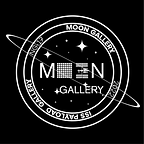Finding our Humanity in Space
At the time of writing, Voyager 1 is about 23.28 billion kilometers from earth, while its twin, Voyager 2, is about 19.44 billion kilometers from home. Or, put another way, 21 hours and 35 minutes, and 18 hours and one minute of light travel time, respectively.
In addition to their ambitious scientific missions, the Voyager spacecraft also have the important job of conveying information about humanity to whatever extraterrestrial life may stumble upon them. Even if either of the two spacecraft manages to accomplish this part of the mission — contact with an intelligent, alien species — we may never know they succeeded.
In short, Voyager is a perfect example of something humans have done since time immemorial. We have created and built cultural artifacts that capture who we are, what we believe in, and what we see at a moment in time. We know that nothing is permanent. Yet we’ve painted caves, built monuments, written epitaphs, poetry, and prayers as a way of saying something about ourselves.
We know where Voyager is. But that won’t always be the case. Sooner, rather than later, we will lose contact with the spacecraft. Long after that — approximately 40,000 years from now — the mission will reach another planetary system. If, by extraordinary luck, that system is home to an intelligent species that is able to decipher our message, how long until they respond? Humans may not be around, and even if they are, will Voyager have long passed out of our collective memories?
This begs the question, then, why build and launch something that may never be observed? In the vastness of space “a drop in the ocean,” doesn’t even begin to capture the challenge of discovering Voyager.
Ultimately, what is the point?
Carl Sagan, as always, had an answer.
“The spacecraft will be encountered, and the record played, only if there are advanced spacefaring civilizations in interstellar space. But the launching of this bottle into the cosmic ocean says something very hopeful about life on this planet.”
At the risk of accusing the great Sagan of missing a trick, we also see another destiny for these spacecraft. An interesting endpoint for Voyager may not be their discovery by an alien race, but rather their discovery by distant, future spacefaring humans. What will they learn about us from the year 1977?
When monuments, words, and paintings produced by our ancestors survive the violence of both humanity and mother nature they give us incredible insight into how we have grown, developed, and shifted.
So, when we are asked, “Why a gallery on the moon when it will be years before it is seen by another human, and likely decades before it is seen by humans regularly?” We answer simply “because we can, and we must.”
We are in the middle of a space-age revival. NASA, ESA, and other space agencies have exciting missions ahead of them. They will improve our understanding of how we got here, of what’s around us, of how the universe works fundamentally. We talk about fuel efficiencies, off-planet mining, and other opportunities that will ultimately benefit the planet. Private companies from SpaceX, to Blue Origin and even Amazon are exploring business opportunities in space. The inevitability of off-planet human settlement is fast approaching, and with that, technology, farming, communications, and of course, weapons. This growth will lead to cultural autonomy and eventually, state creation.
This is a process that requires not just the best from our scientists and engineers, but the best from all of us. Art, architecture, and off-planet language development are all pieces of a statehood puzzle that requires thoughtful cultivation with the understanding that there is no endpoint. This is what makes it exciting. We want to get a head start.
To that end, we see the Moon Gallery as the seeds of an interplanetary culture. We cannot expect it to sprout out of the Lunar regolith on its own. We must make deliberate decisions to allow culture to flourish. The Moon Gallery is our contribution.
The bonus, of course, is that humanity will not have to wait thousands of years to potentially reap the benefits. NASA plans to land humans on the moon as early as 2025 and it isn’t far-fetched to think that there will be a permanent settlement on Luna within the next 50.
So, the gallery is a monument, an archeological artifact that can say something important about who we are. The Moon Gallery artists have grappled deeply with these questions. Their contributions are profound, deliberate, and thoughtfully realized. While those of us who are building the Moon Gallery will likely never see it at its final destination (and the number of humans who will get to experience it in the next century is negligible) the gallery is so much more than who can or can’t see it. Like Voyager, it’s a conversation.
Sagan once wrote:
“One glance at a book and you hear the voice of another person, perhaps someone dead for 1,000 years. To read is to voyage through time.”
Moon Gallery is no book. It is a chorus of 100 artists sending out an enthusiastic “hello” to future generations.
